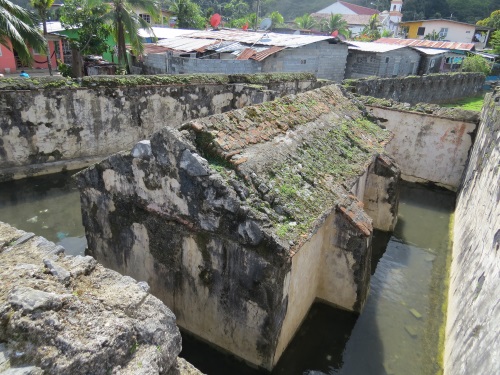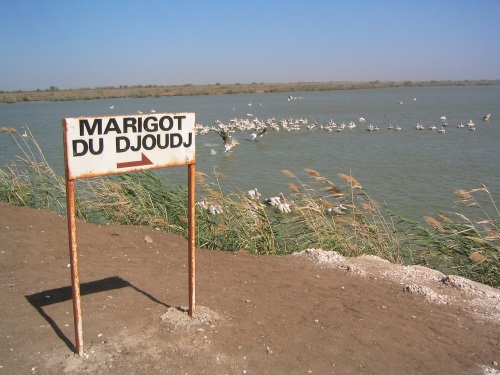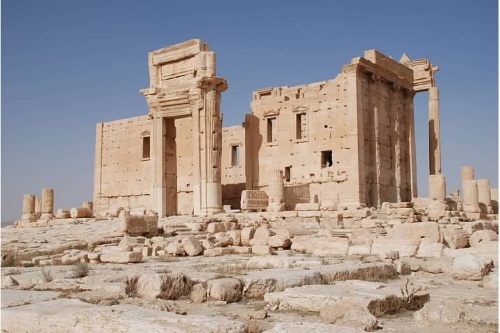Blog Connections
A History of WHS in Danger
The UNESCO World Heritage List owes its existence directly from safeguarding endangered monuments. The succesful campaign for the salvage and relocation to higher ground of the temple complexes of Abu Simbel and Philae because of the construction of the Aswan Dam was an important trigger to create the World Heritage Convention in 1972.
List of World Heritage in Danger
A specific subset of this List contains the sites that are labelled ‘in danger’. Inscription on the List of World Heritage in Danger has the purpose “to inform the international community of conditions which threaten the very characteristics for which a property was inscribed on the World Heritage List, and to encourage corrective action”. That danger can be ‘ascertained’ (sites already facing specific and proven dangerous situations) or ‘potential’ (sites threatened by situations that can have harmful effects, such as armed conflict).1.
 |
| Portobelo (Panama): suffering from floodings and general neglect |
Some statistics
Since the publication of the first World Heritage List in 1979, 76 different sites have been put on the Danger List:
- 1 immediately was deemed in danger in 1979 (Kotor);
- 12 were already endangered upon inscription;
- 18 have been in danger for more than 10 years and still are;
- 30 are natural or mixed sites, 46 cultural (percentage wise natural sites are more prone to fall into danger as the general division of WHS is 228 natural/mixed versus 803 cultural);
- more than half were added since the year 2000 (showing that the Danger instrument is used more often nowadays, which could be a sign of more danger or of much closer monitoring);
- remarkably, none of the (former) danger sites are in the countries with the most WHS, such as Italy, China or Mexico (these countries seem to have their acts together on conservation).
Five sites have even been labelled ‘In Danger’ twice: Djoudj (1984 and 2000), Everglades (1993 and 2010), Garamba National Park (1984 and 1996), Rio Platano Biosphere Reserve (1996 and 2011) and Timbuktu (1990 and 2012). Each time it was for different reasons as far as I can tell, but this obviously is not a sign that the property achieves a lot of management attention.
 |
| Djoudj National Park in Senegal: In Danger twice |
Reasons and trends
How did all these sites become endangered? To get a feel for this I looked for the reasons given in the State of Conservation reports, and updated the Danger List on this website with those for each individual WHS that has ever been in danger. War, conflict and other human interventions seem to do more damage than natural disasters. A tornado hit the Royal Palaces of Abomey, a fire almost completely destroyed the Tombs of the Buganda Kings, a hurricane damaged the Everglades and of course there were several major earthquakes (Kotor, Bam, Baku). Surprisingly, this year’s earthquake in the Kathmandu Valley did not lead to an immediate inscription on the Danger List, despite "extensive damage". The WHC usually seems to wait a year or so for a request for help by the State Party.
 |
| Palmyra's Temple of Bel, victim of human destruction (Photo by Michael Novins) |
Especially since 1991 (starting with Dubrovnik), various forms of armed conflict have lead to placement on the List of World Heritage in Danger. The wars in former Yugoslavia, Iraq, Syria and local / tribal conflicts in Mali, DR Congo, Niger and India have done much harm. Is this a new trend? I don’t think so – various heritage sites including those that are now WHS, have been hit during the Vietnam War and Korean War too (not to mention those that were hit or destroyed during World War I or II). 20-25 years later, several of the former endangered sites have returned to their former or improved selves. Plitvice, Dubrovnik and Angkor are now tourist attractions welcoming one million visitors or more. Sites of this importance do proof to have a strong resilience. Let that be a lifeline for Palmyra.
Els - 5 September 2015